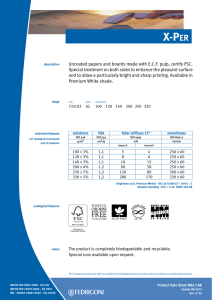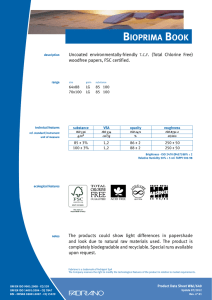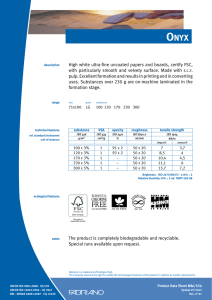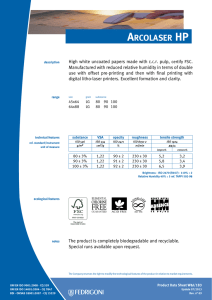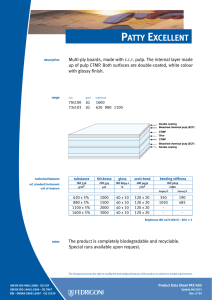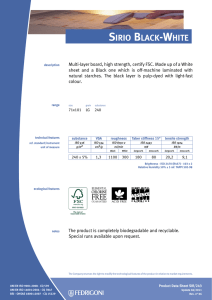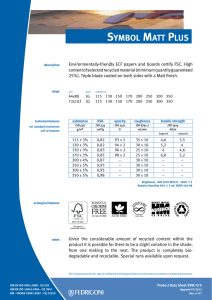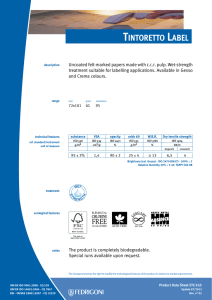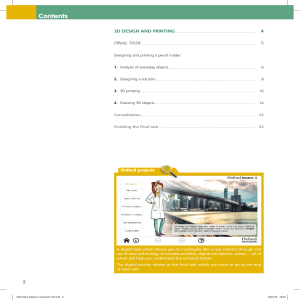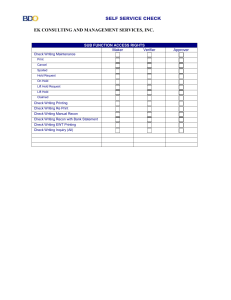Century Cotton Laid
Anuncio
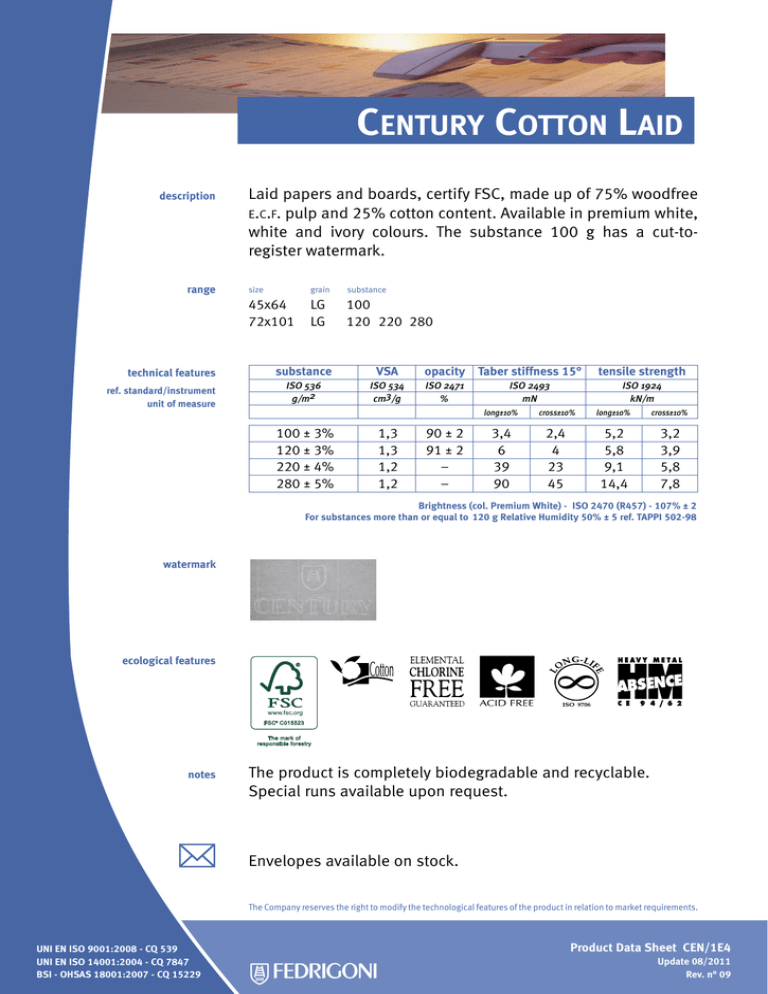
Century Cotton Laid description range Laid papers and boards, certify FSC, made up of 75% woodfree e.c.f. pulp and 25% cotton content. Available in premium white, white and ivory colours. The substance 100 g has a cut-toregister watermark. size grain 45x64 LG 72x101 LG technical features ref. standard/instrument unit of measure substance 100 120 220 280 substance VSA ISO 536 g/m2 ISO 534 cm3/g opacity Taber stiffness 15° ISO 2471 % 100 ± 3% 120 ± 3% 220 ± 4% 280 ± 5% 1,3 1,3 1,2 1,2 90 ± 2 91 ± 2 – – ISO 2493 mN long±10% cross±10% 3,4 6 39 90 2,4 4 23 45 tensile strength ISO 1924 kN/m long±10% cross±10% 5,2 5,8 9,1 14,4 3,2 3,9 5,8 7,8 Brightness (col. Premium White) - ISO 2470 (R457) - 107% ± 2 For substances more than or equal to 120 g Relative Humidity 50% ± 5 ref. TAPPI 502-98 watermark ecological features notes The product is completely biodegradable and recyclable. Special runs available upon request. Envelopes available on stock. The Company reserves the right to modify the technological features of the product in relation to market requirements. UNI EN ISO 9001:2008 - CQ 539 UNI EN ISO 14001:2004 - CQ 7847 BSI - OHSAS 18001:2007 - CQ 15229 Product Data Sheet CEN/1E4 Update 08/2011 Rev. n° 09 Century Cotton Laid is ideal for writing papers, corporate and social image, monographs, de luxe publications and packaging, tags, menus, greeting cards and announcements, advertising works. applications Can be used without problems with the main printing systems: letterpress, offset, blind embossing, hot foil stamping, thermography and screen printing. The macro-porous surface requires the use oxidative drying inks. The characteristic laid finish requires specific printing pressure settings. Low substances can also be used with non-impact printing systems: electrophotographic systems, laser and ink-jet printers. The 100 g version in 45x64 size is specifically designed to ensure optimal performances where offset pre-printing has been followed by printing with xerographic toner/technology systems (LITHOLASER). printing suggestions Varnishing and plastic laminating must be assessed in advance. The varnish coated with an offset machine is almost fully absorbed and therefore does not improve gloss or protection. Screen-printing varnishing achieves better results, although it is often necessary to perform two shots to achieve a distinctly evident result. The surface roughness typical of laid papers may give rise to micro defects with plastic laminating caused by incomplete adhesion of the film to the substrate. Good results with major processing operations such as: cutting, die-cutting, scoring, folding and glueing. converting suggestions

